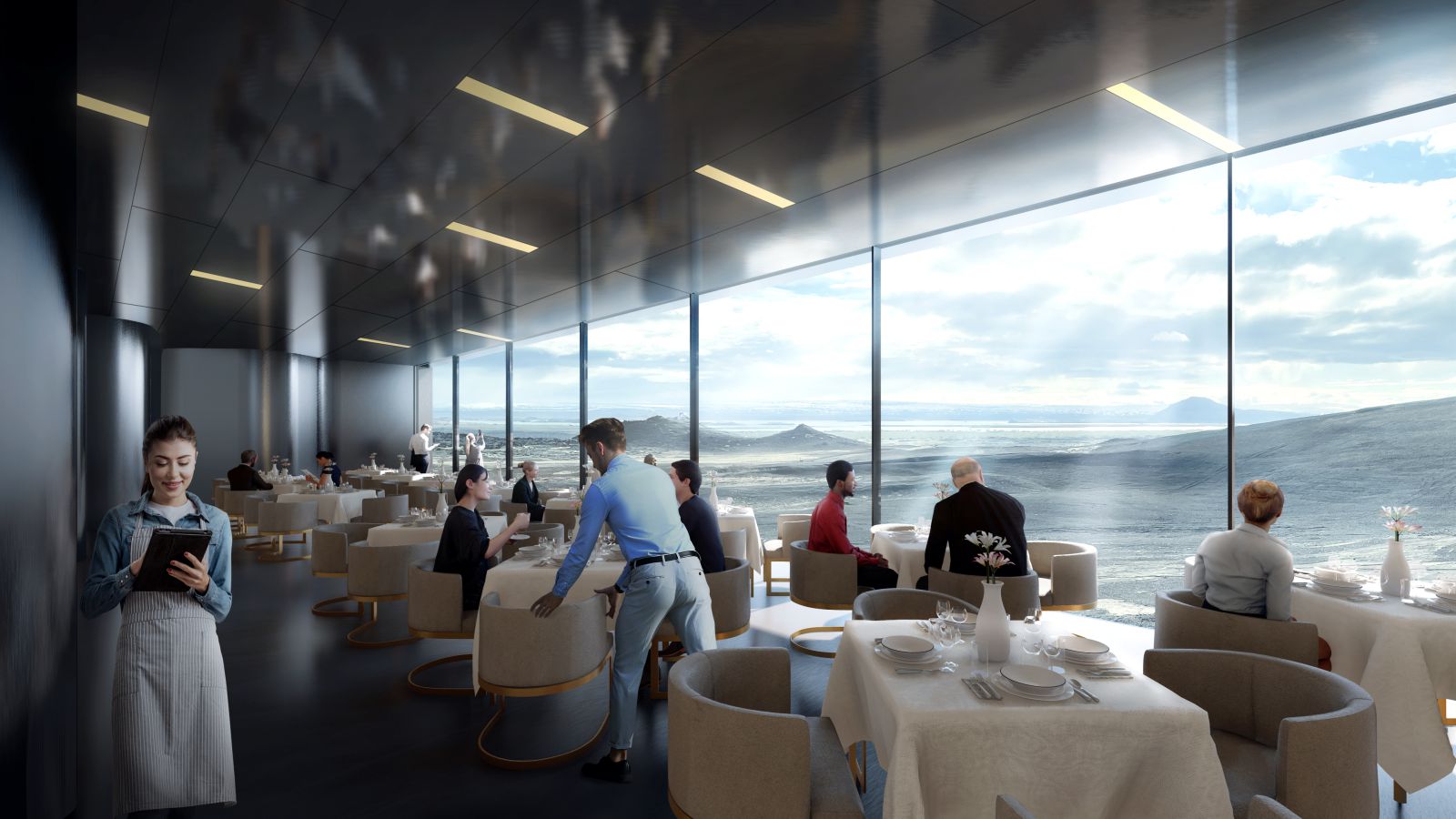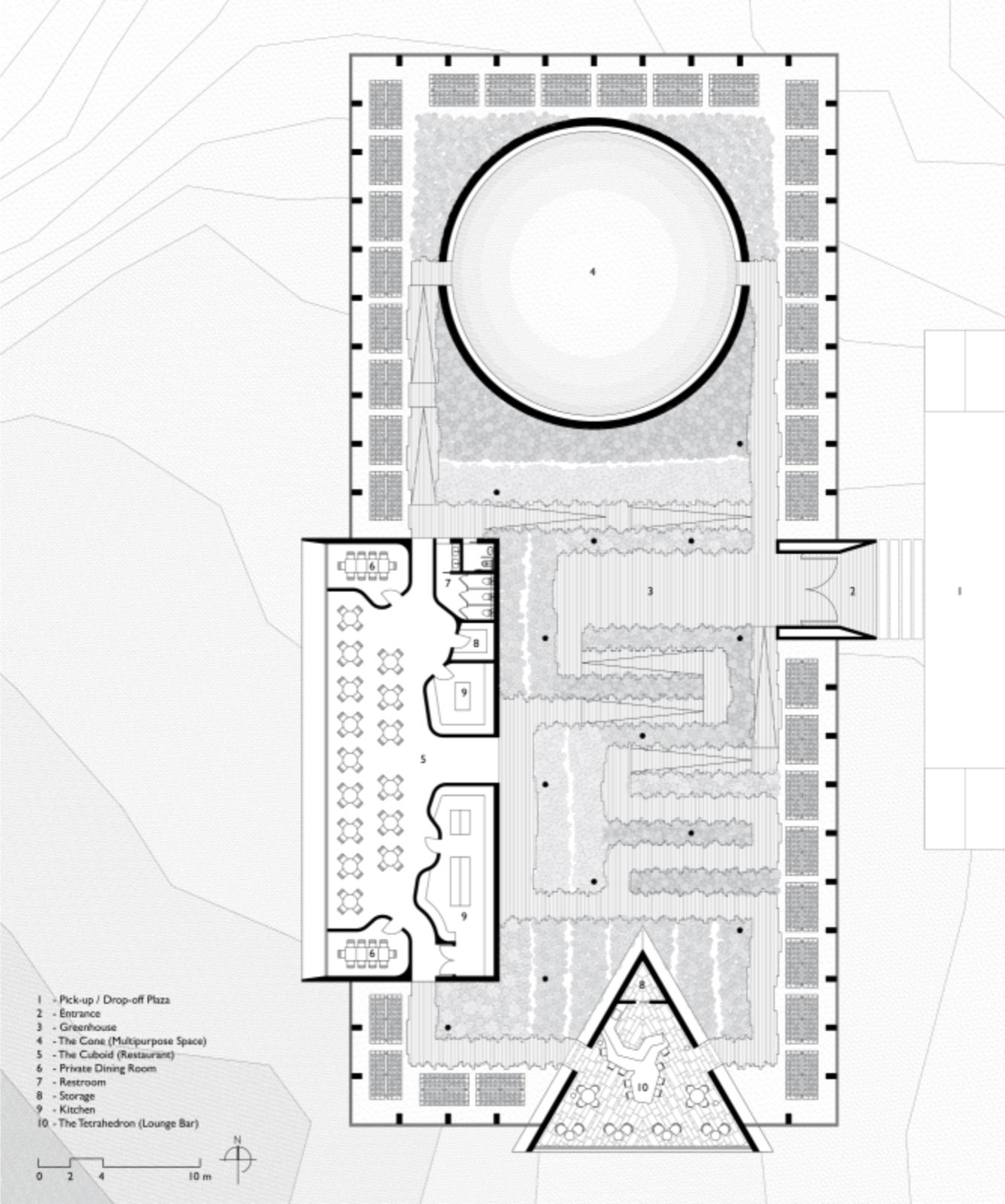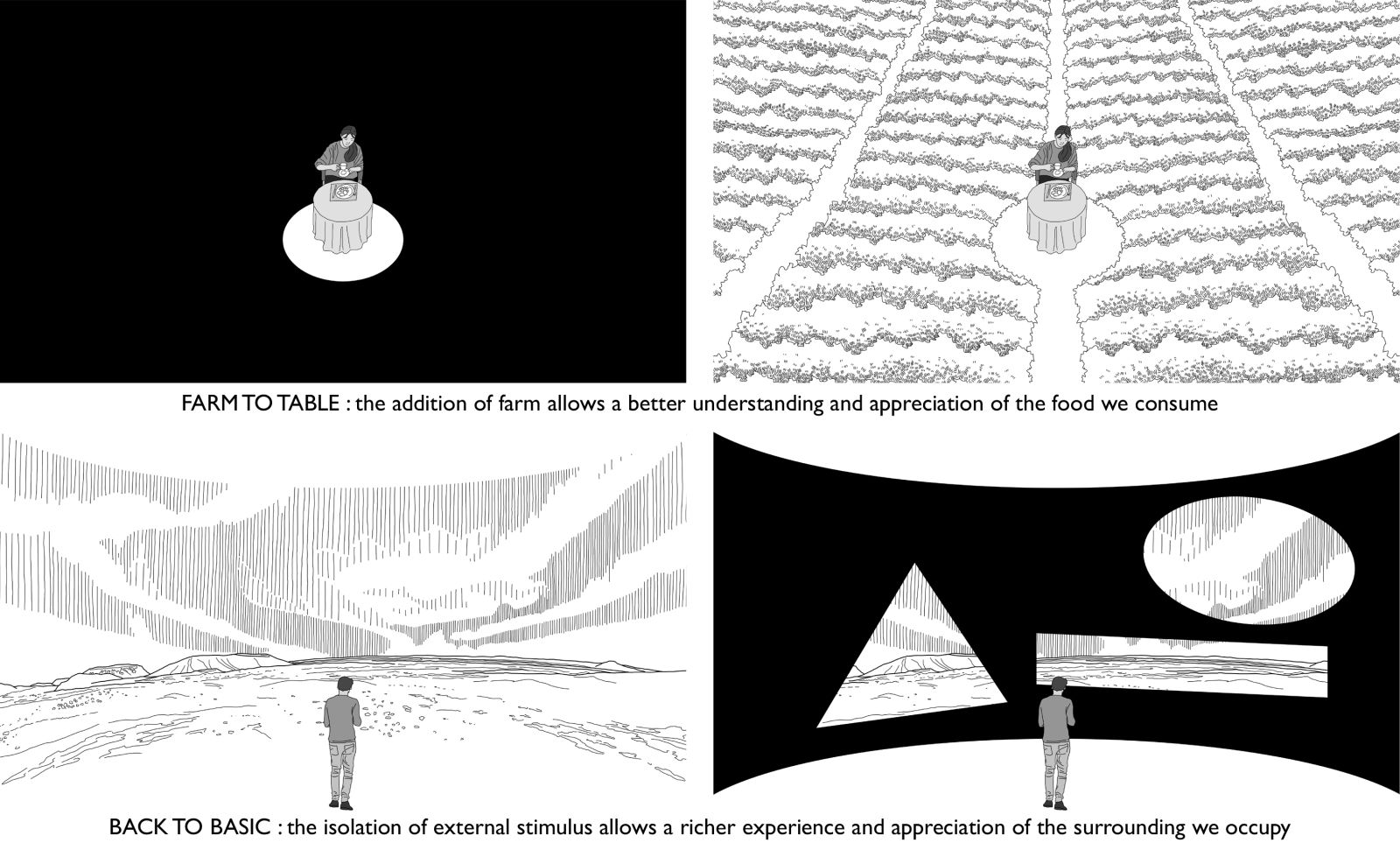Food has been an integral part of our daily life. While the culinary and the dining experience are widely celebrated, they are just part of a bigger process in food production which the rest are often neglected. The Greenhouse Restaurant is set to offer a new experience, bringing together the process of farming, ingredients processing and dining into one place.
The amalgamation of a restaurant with greenhouse is an act in celebration of food – especially in places such as Iceland whereby locally grown food is a rarity. By integrating the “behind the scene” process of food production as part of the visitor experience as they meander around the farm before reaching their seats, it creates an immersive environment by adding context and background to the meal served onto one’s table.

Putting this against the dynamic landscape of Iceland, designing a Greenhouse Restaurant has to translate the “Farm-to-Table” ideology to its architecture, expanding the very isolated dining experience into a bigger context, in this case, exploration on the relationship between farm and dining versus surrounding and space.
How can the restaurant further enhance the experience and deliver a new perspective to the landscape in a similar appreciative way the farm did to the food? What additional qualities can the restaurant provides to its visitor in experiencing Iceland when they can just simply wander around the open landscape?

While one is always surrounded by the richness of the natural landscape elements when in Iceland – the landform, the water, the sky… each is always in the presence of the others, and the experience can sometimes be overwhelming. The Greenhouse Restaurant sees an opportunity to create a distinct experience by separating each of the surrounding elements and framing them individually, allowing each to be taken in completely one at a time without the others shouting for equal attentions.
Learning from “Farm-to-Table”, the architecture translates this into the concept of “Back-to-Basic”, reducing external stimulus and distractions to focus on specific attractions found around the site – Hverfjall, Lake Mývatn and the Northern Light. In the same manner of how the addition of farm allows us to better understand the food we eat.

Contrary, the reduction of our surrounding allows us to better witness the beauty of nature, both in their own ways raising consciousness and gratitude of what we consume. As such, the Greenhouse Restaurant adopted simple yet abstract rectangular form to prevent overpowering the surrounding, with three main activity spaces – Multipurpose Space, Restaurant and Lounge Bar designed to each respond to an element.
Instead of replicating the natural environment and trying to compete, architectural forms compliment them by highlighting their characteristics, adopting basic geometries to eliminate unnecessary attentions while acting as a backdrop that frame the views and elevate the immersive ambience:

The Cone Multipurpose Space conceals the surrounding with slanted continuous concrete wall and bounds the infinite sky and shapeless Northern Light with a strong unifying circular aperture. The Tetrahedron Lounge Bar frames the view of Hverfjall, with triangular opening emphasizes the scale of the mountainous landscape, further dramatized by rough granite cladding that evokes emotion.
The Cuboid Restaurant frames the far panoramic view of shimmering Lake Mývatn and the plain faraway, with mirror ceiling and walls reflecting the landscape, bringing it closer for a seamless, immersive dining experience. As the farm gives form to the food, the architecture gives form to the space, and the space gives form to the landscape. Source by Heffrence Teow.


- Location: Mývatn, Iceland
- Architect: Heffrence Teow
- Area: 2000 sqm
- Year: 2022
- Images: ALOT, Courtesy of Heffrence Teow




